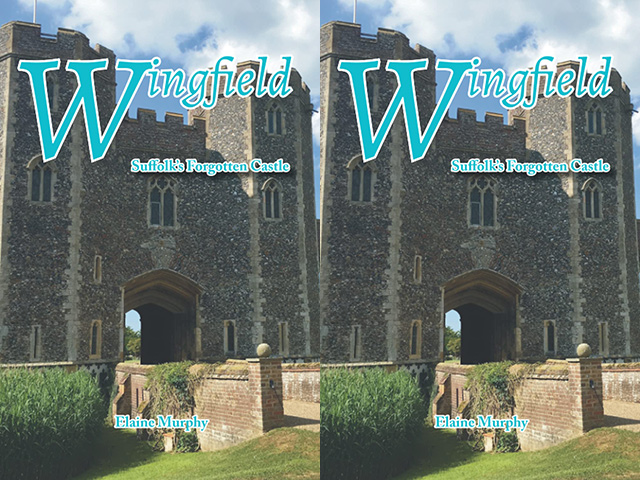Wingfield: Suffolk’s Forgotten Castle
Book review

Wingfield: Suffolk’s Forgotten Castle, Elaine Murphy, Poppyland Publishing, 2021, 396pp., £19.95. ISBN 978-1-909796-88-1.
Grade 1 listed Wingfield Manor, ancestral home of the Wingfield family was inherited by Michael de la Pole, earl of Suffolk, in 1385, less than four weeks after his marriage to Katherine Wingfield, sole heir of her father Sir John. De la Pole added fortifications. Richard de la Pole, the last Yorkist claimant to the throne, died in exile. Wingfield Castle passed to Charles Brandon, Duke of Suffolk, and was then briefly in Crown ownership before being granted to Henry Jerningham. A reward for his role in ensuring the accession of Mary I.
In the 1550s, Jerningham demolished the western range of the medieval castle and built a new, more comfortable house, probably on the footprint of the great hall. The impressive porch and some other elements of the 16th-century building have survived later alterations and are incorporated in the pale rendered stone, brick and part-timbered house that stands today. Of the de la Pole castle, only the south curtain wall of flint rubble with stone dressings still stands, at right angles to the later private house. A striking two-storey gatehouse bearing the Wingfield and de la Pole arms is flanked by polygonal bastions.
Henry Jerningham’s sons ran into financial difficulty. Wingfield was abandoned and the neglected estate plundered for its stone and the deer in the park poached. The castle was rescued and given a new lease of life after it was purchased by Thomas Catelyn in 1624. The Catelyns managed to hold on to Wingfield during the upheavals of the Civil War despite their family’s unwavering allegiance to the Royalist cause. After the Catelyns, Wingfield Castle passed through the ownership of various members of the East Anglian gentry.
The chapters charting the history of the castle and those who lived here from its medieval origins to the present day follow chronological order and have helpful sub-headings. This is a comprehensive, detailed, solidly referenced and well-illustrated work and certainly a ‘must read’ for anyone interested in Suffolk history. The involvement of Sir John Wingfield, the de la Poles, Charles Brandon, Henry Jerningham and to a lesser extent the Catelyns, in national affairs at the highest level, coupled with the contextual consideration given to comparable buildings and more general topics including architectural fashions, choice of site, the Yorkist ‘White Rose’ cause and the religious upheavals of Tudor and Stuart England, give this book much wider appeal.


